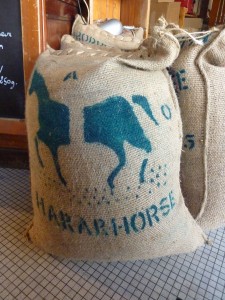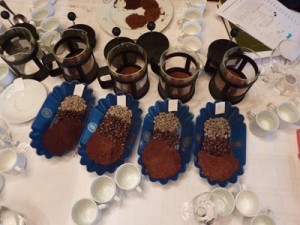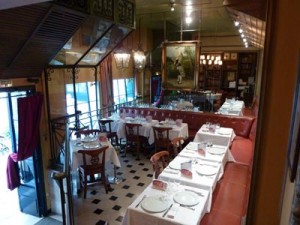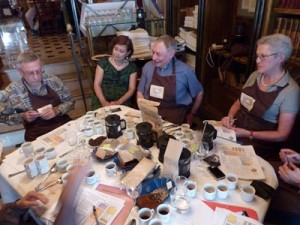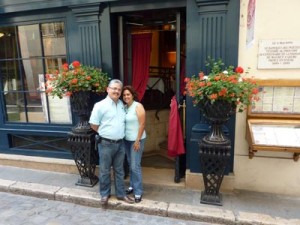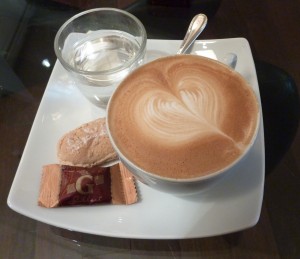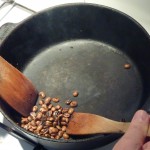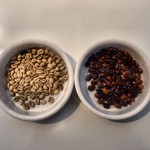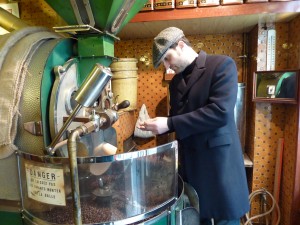Maxime Marcon-Roze hails from Chelles, a town that lies about 22 km to the east of Paris. At some point during his university studies in biology, he discovered the world of coffee and decided that that was the field in which he wanted to work. He has been in the business for five years now, and is manager of the Brûlerie des Gobelins.
We wrote about this coffee-roasting store in 2007, when we interviewed the owner, Mr. Logereau. Mr. Logereau has since retired from the business, but before leaving he taught Maxime his techniques of roasting, permitting Maxime to continue offering the same kinds of coffees, roasted in the same way.
This brûlerie specializes in blended and unblended Arabica coffees. For example, Maxime sells an unblended Moka Harrar from a specific estate in Ethiopia whose proprietor identifies his coffee with the image of a horse and the name “Harar-Horse” stenciled on the burlap bags in which the coffee is delivered. The image of the animal reflects the proprietor’s interest in the pure-blood horses that run wild on his plantation. Maxime describes the coffee as “strong, but not aggressive; smooth; long finish; robust, woody aromas.”
When I asked Maxime to name his favorite coffees, he replied without hesitation that he prefers Ethiopian and Yemenite coffees. He described another Moka that he likes, the Sidamo: “smooth, soft, fruity, and full-bodied.”
Maxime says that he has two kinds of clients—experienced coffee drinkers and novices. He directs those in the first category to specific kinds of coffee that he thinks they will like. For those in the second category, he will recommend what he calls “classic” coffees, such as a sweet, low-acid coffee from Brazil. In each case, he takes the time to describe the flavors and aromas of the coffees to his customers.
Maxime attends a coffee tasting once a month to seek out new coffees to propose to his clients. He calls the coffee that he selects his “coffee of the month,” and stocks it for about two months. The “coffee of the month” is always announced on a chalkboard that stands at the entrance to the store. This month’s coffee is Guatemala Antigua Panchoy, “a full and balanced coffee with no bitterness.”
Maxime enjoys meeting foreigners who come into the shop. He has a particularly fond recollection of a Korean coffee roaster who declared that his best sales were also Harrar and Sidamo. As for Americans, he says that they make up a tiny fraction of his customers.
In addition to coffee, the shop offers a good selection of tea, cakes, cookies, candies, honey, chocolates, and jams and jellies.
Brûlerie des Gobelins
2, avenue des Gobelins
75005 Paris
Telephone: 01.43.31.90.13
Metro: Censier-Daubenton or Gobelins (Line 7)
Like our blog? Join us on Facebook!


